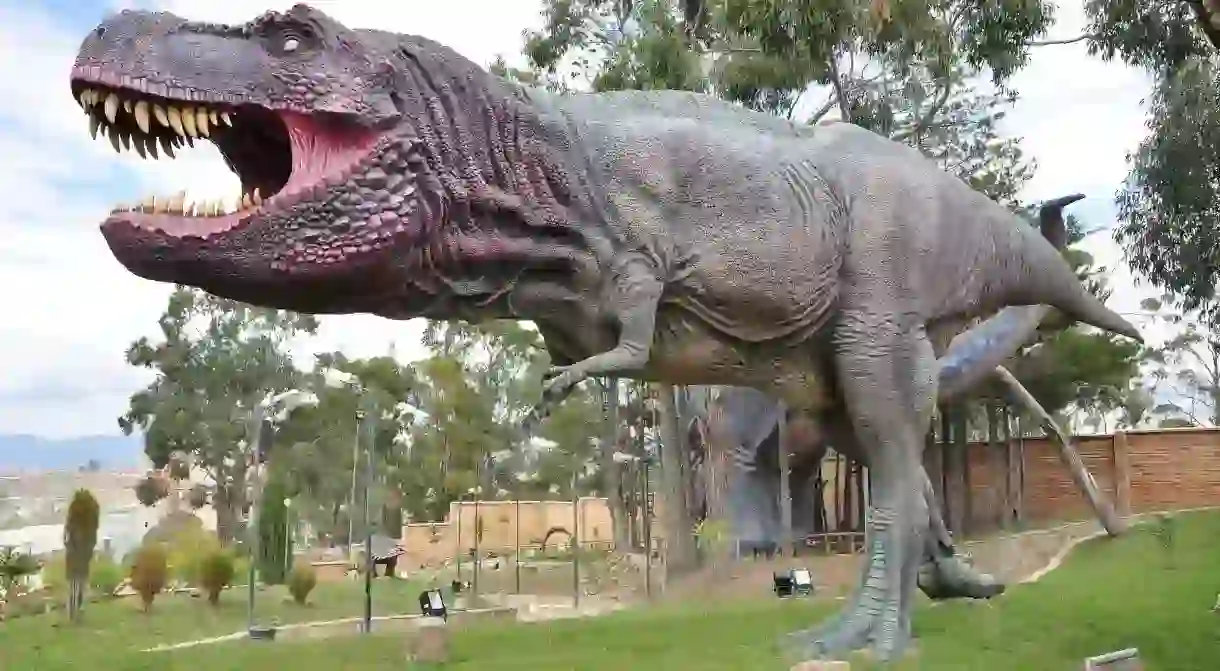Cal Orcko: What to Know About Sucre’s Dinosaur Dance Floor

In 1994, a group of industrial cement manufacturers just outside of Sucre made a remarkable discovery. They unwittingly stumbled upon one of the largest dinosaur footprint collections in the world, with some 5,000 individual prints scattered across a huge limestone wall. Dubbed the Dinosaur Dance Floor for its sheer number of zigzagging imprints, the discovery gained international attention and became the continent’s premier paleontological attraction.
Since being unearthed, expert paleontologists from all over the world have traveled to Bolivia to study the site, also known as Cal Orcko. After years of intense research, they determined that at least six different dinosaur species were responsible for its 462 separate tracks. The most impressive track comes from a baby Tyrannosaurus Rex nicknamed Johnny Walker, whose 1,200-foot (347-meter) journey is the longest preserved trail to have ever been discovered.

Paleontologists believe the prehistoric wanderings of these mammoth beasts took place some 68 million years ago during the Late Cretaceous Period. Back in those days, the area was home to an enormous shallow lake that stretched as far as Argentina. The lake eventually dried up, leaving the footprints to fossilize and become buried underneath numerous layers of sediment. In a process that took tens of millions of years, tectonic plates pushed the Andean mountain range upwards, turning the once flat limestone beach into the almost vertical wall seen today.

Although several other fossilized prints exist in the area, Cal Orcko is by far the most significant, partly because experts believe it contains several other footprints underneath the surface. Sadly, however, the entire site is at risk of degradation, with a section of the wall breaking off in 2010 and damaging several tracks. A process is currently underway to obtain UNESCO heritage status in order to acquire much-needed funding to preserve the wall. If things continue the way they are, the delicate limestone surface could become irreversibly damaged from erosion as soon as 2020.

In an attempt to bring more tourists to the area, Parque Cretácico was established right on the edge of the site. Here, visitors can enjoy several dozen life-size fiberglass statues of dinosaurs that once roamed the region. A crowd favorite is the Titanosaurus, an ominous 118 x 59-foot (36 x 18-meter) monster that towers above the others. From the park, visitors can also admire the Dinosaur Dance Floor from a viewing platform or take a guided tour along a path just meters from the wall. Other on-site facilities include a museum, library, gift shop, and basic restaurant.

How to visit
Parque Cretácico is open Tuesday through Friday from 9:00 a.m. to 5:00 p.m. as well as Saturdays, Sundays, and public holidays from 10:00 a.m. to 6:00 p.m. Guided tours of the Dance Floor depart at 12:00 p.m and 1:00 p.m. daily. One way to get there is by a fun dino truck that leaves from Sucre’s main plaza at 11:00 a.m. and 3:00 p.m. for 20 BOB (US$3) return. Alternatively, taxis charge around 100 BOB (US$15) for a return trip, including waiting time. Entry to the park costs 30 BOB (US$4.30), which includes a guided tour in English.














